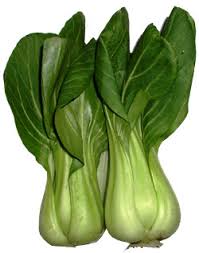This past fall was the first year we planted Bok Choy. Otherwise known as Chinese Cabbage, this was a new vegetable for us. It is widely used in Chinese cooking and is generally stir-fried or sauteed as a side dish. It is a very nutritious dish that is in the brassica family, closely related to the cabbage or common turnip.
 |
| Bok Choy |
We liked it, but I really planted more than we could possibly eat, and we couldn't keep up with all the production before a lot of it bolted and went to seed. That's okay, though, since it is from heirloom, open-pollinated seed-stock, we can save the seed and not have to buy new seed next year. Here's how we did it.
The plant extends a long stem with yellow flowers that eventually yield a multitude of seed pods on it.
 |
| Bok Choy Seed pods on the long stem |
Once you notice the seed pods getting a tinge of yellow color, you can clip off the stems with some clippers. If you don't clip them at this point, the pods will open and the tiny seeds will shatter all over the ground and you will have lost your seed.
 |
| Clipping the stem for drying |
I simply store the stems/seed pods in a bucket for several weeks in a dry location. In this time the pods turn from green to brown and they become dry and brittle. You can mash them down at this point.
 |
| One of two buckets I have of Bok Choy Seeds |
These boogers are prolific in producing seeds. Please ignore my very dirty fingers below and check out the number of seeds in just one seed pod. I count 17 seeds in just one pod - amazing!
 |
| Seeds of Change |
When the seed pods are dried, I poured into a separate bucket and began to mash up the stems and pods to release the seeds.
 |
| Mashing up the seed pods |
One handful at a time, I pour into a separate bucket. You can see the seed separating from the chaff below:
 |
| Separating seed |
I pour this mixture through a colander that will allow the seed to flow through, but most of the stems and seed pods to remain in the colander.
 |
| Pouring through a colander |
And here is the finished product. It looks just like cabbage, cauliflower, broccoli, and turnip seed. I'm sure there is a better way to do it since there is still some chaff in the seeds. It was a pretty windy day when I did this and I tried to mimic the way they used to thresh wheat. I threw the seed in the air, allowing the wind to carry away the chaff while allowing the heavier seed to fall back down in the bowl. I could have done this for longer and ended up with really clean seed, but I didn't see the point. This Fall, I'll plant the seeds and see what type of germination I get.
 |
| The finished product - Bok Choy Seed |
It is important to save your seed in a dry location. We save vitamin and supplement containers for this purpose. I used a funnel to pour the seed from the bowl into the seed storage container.
 |
| Bok Choy Seed |
Since some seeds look alike, I find it very important to label the container with the name of the seed as well as the crop year that it was saved from.
 |
| Labeling on the cap of the container |
I really do have a lot of Bok Choy seeds. This is less than half of the total seeds I have drying right now. If anyone is interested in trying some Bok Choy in their garden, get in touch with me, I'd be more than happy to share.











No comments:
Post a Comment